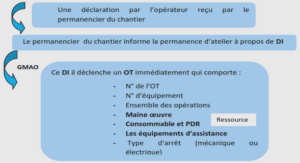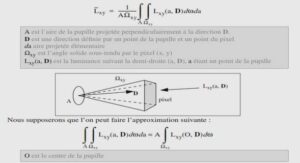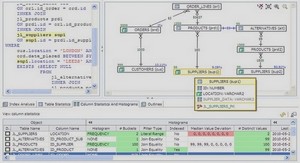Microscopic dynamics of a soft colloidal glass
Macroscopic rheology
The bulk viscoelastic properties of the dispersions were investigated using conventional rheology. The rheometer is a ThermoRheo RS600 controlled stresses rheometer. The mesurements were made using cone and plate geometry (diameter: 35mm; angle: 2°). Both the cone and the plate were slightly roughened by sandblasting to suppress slip phenomena that are ubiquitous for this type of materials. The use of a solvent reduces evaporation. We characterize the linear viscoelastic properties by the storage and loss moduli G’ and G”, which are obtained from oscillatory measurements performed at small strain (typically <0.01) over the accessible frequency window (10-3 rad/s<<10 rad/s).
DWS experiments
The experimental setup is represented in Figure V–1. The experiments are performed in the transmission geometry. They are illuminated using an Argon laser (Coherent Innova 300) operating in the TEM00 mode and emitting at 514.5nm. The output power is about 1 W. The laser beam is first collimated on a spatial filter which removes its imperfections and expands it to a diameter to a diameter of about 20 mm so that the sample will be considered as being uniformly illuminated.
Since the beam is linearly polarized by the Brewster windows that limit the two ends of the cavity, the intensity impinging on the sample can be finely a Glan-Thompson polarizer. Since multiply scattered light is depolarized, the intensities of light with parallel and perpendicular polarizations (with respect to the incident beam) are equal and independent, which reduces the signal-to-noise ratio.
To avoid this, a polarization analyzer placed at the exit of the sample before the detector selects one particular polarization. The direction of the analyzer is adjusted in order to be perpendicular to that of the Glan-Thompson polarizer, which has the additional advantage to suppress the photons that have not been multiply scattered. Our setup enables measurements on samples in the quiescent state, under flow and during aging.
For quiescent state studies, the samples are kept at rest into parallelepiped glass cells (Hellma GmbH) with various internal thicknesses L ranging from 2 mm to 20 mm. The cell is moved in front of the beam by using a motorized linear stage (Melles Griot), which has a resolution of 0.1 m. For out-of-equilibrium state studies, the suspension is placed in a rotational shearing stage Linkam CSS450, consisting of a movable glass plate at the bottom and a fixed microscope cover slip at the top (D = 22 mm).
Two different detections are implemented to cover a broad range of timescales
For high speed measurements giving access to the dynamics of the material over short time scales (10-8 s < t< 10 s), a monomode optical fiber with low acceptance angle collects the scattered light emerging from the opposite side of the sample and sends it to a EMI photomultplier (PMT).The signal from the PMT is first treated by an amplifier discriminator before being directed to a Brookhaven correlator (BI-9000AT). This correlator operates in multi-tau mode. There are 26 high speed channels (with sampling times ranging from 25 ns to 2.4 s), 256 medium speed channels (5s1.6 s and 240 low speed channels (1.6 s1300s). The correlator calculates the time-averaged intensity correlation function (ICF), g(2)(t).
For low speed measurements giving access to the slow dynamics of the material, the detector is a CCD camera equipped with a photographic lens equipped with a zoom (focal distance: 25-80 mm; numerical aperture: 2.1). The CCD camera 8 bit digital camera with 640X480 pixel sensor, each pixel being 9 m2 . The maximum camera speed is 30 frames per second. The digitized speckle patterns are acquired by a frame grabber (Matrox Meteor II) and processed using a custom-written software with a friendly-user interface [45] developed in IDL environment [46]. The autocorrelation functions are calculated in real time and in parallel for all pixels processed using a multitau scheme. The technique is described in details in





